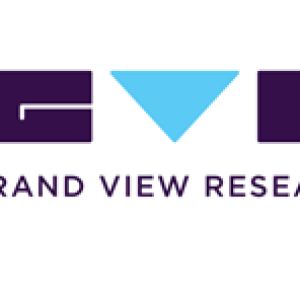U.S. Hotels, Resorts And Cruise Lines market to Eyewitness Huge Marginal Growth by 2030Posted by Mrudula Anil Karmarkar on July 25th, 2022 The U.S. hotels, resorts, and cruise lines market size is expected to reach USD 488.1 billion by 2030, registering a CAGR of 9.3%, according to a new report published by Grand View Research, Inc. The demand for hotels and resorts varies by property type and is influenced by factors such as location, size, and on-site amenities. The market is likely to be driven by rising disposable income, the popularization of weekend culture, the introduction of low-cost airline services, and the developing service industry. Some of the primary factors responsible for drawing clients to hotels and resorts include inflation in spending power and style of living. Furthermore, the rise of digital innovation aided in the recording of this rising number, as well as the ability of players who manage shared spaces, such as Airbnb, to reach out to their target audience. In addition, according to Forbes in 2020, remote work has also made it easier to work from any place, which is why an increasing number of digital nomads are working while staying in hotels. Many people are considering relocating outside of the Bay Area and other cities such as New York now that they can work remotely. According to a May 2020 survey of thousands of IT workers, two-thirds are considering leaving the Bay Area. Hotels have another reason for wishing to accommodate long-term visitors. Hotels aim to fill the gaps caused by COVID-19 with long-term guests. The world's largest hotel chain, Hyatt, in 2020, introduced its Work from Hyatt program, which includes discounts and free high-speed Wi-Fi for stays of seven days or more. According to CBRE 2021 estimates, hotels in the U.S. have noticed a significant drop in demand since the onset of COVID-19 in 2020 Quarter 1. Fear of infection, forced closures, and reduced business travel all contributed to a significant drop in the accommodation industry. Moreover, the data stated that occupancy may not return to pre-COVID-19 levels until 2023, with RevPAR following in 2024. To Request Sample Copy of this report, click the link: In 2022, higher chain scales have seen the greatest percentage and absolute declines in RevPAR. Chains in the upper echelon were particularly heavily hit. According to CBRE, the resumption of group travel will take some time, requiring a ramp-up phase, lowering occupancies, and slowing ADR growth for higher-priced chain scales and property types that rely more heavily on food and beverage revenue. Furthermore, according to the American Hotel and Lodging Association's State of the Hotel Industry 2021 study, the pandemic cost over 670,000 hotel industry operations jobs and nearly 4 million hospitality employees in 2020. U.S. Hotels, Resorts, And Cruise Lines Market Report Highlights
The growth in the tourism and travel business in the U.S. is driving the demand. In 2020, the hotel sector had its worst year on record, with historically low occupancy, enormous job losses, and hotel closures across the country. According to the American Hotel and Lodging Association, with travel demand remaining below normal, national and state predictions for 2022 show a slow return for the industry in terms of hotel occupancy in the U.S. According to the Hotel Data Conference Global Edition 2021, hotel occupancy in Florida was among the highest in the country in 2021, exceeding the national average of 48.1%. As a result, hotel occupancy in the U.S. has been steadily increasing since late January 2021, when it reached a new epidemic high of 58.9%. Even after accounting for temporarily closed hotels due to the pandemic, the occupancy rate was 55.7%. Furthermore, according to the AHLA's state of the hotel industry 2021 report, leisure travel is projected to rebound first, with consumers confident about national vaccination distribution and their ability to travel again in 2021. Have a Query? Ask Our Expert: https://www.grandviewresearch.com/inquiry/4941/ibb The market includes both international and domestic participants. Key market players focus on strategies such as innovation and new product launches to enhance their portfolio offering in the market. In July 2021, Carnival Corp announced that their new ship, the Mardi Gras, would set sail from Port Canaveral to the eastern and western Caribbean. The ship is the first in the world to feature a rollercoaster on board, as well as the first in North America to be fueled by liquefied natural gas, according to Carnival Corp. Some prominent players operating in the U.S. hotels, resorts, and cruise lines market include:
Like it? Share it!More by this author |


